

Learn more about PASS/START-PROF pipe stress analysis software
Accurate modeling and boundary conditions are critical for reliable piping stress analysis. A common error occurs when modeling pipe sections where continuation beyond the analysis scope is unknown.
This situation arises when adjacent piping is designed by other teams, departments, or when design is incomplete. Some engineers incorrectly model these interfaces as free ends without restraints (nodes A, B, C, D, E, F), creating artificial boundaries between "our" and "other" piping sections.
The following incorrect models were submitted to PASS/START-PROF technical support:
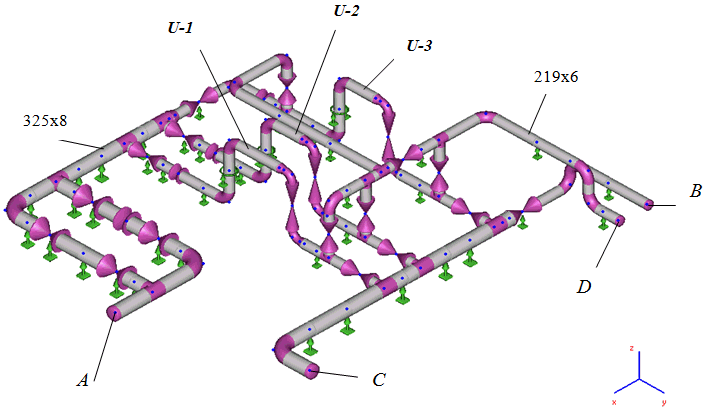
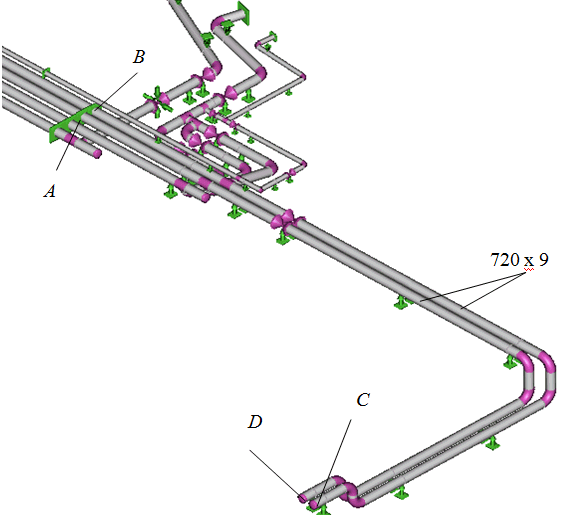
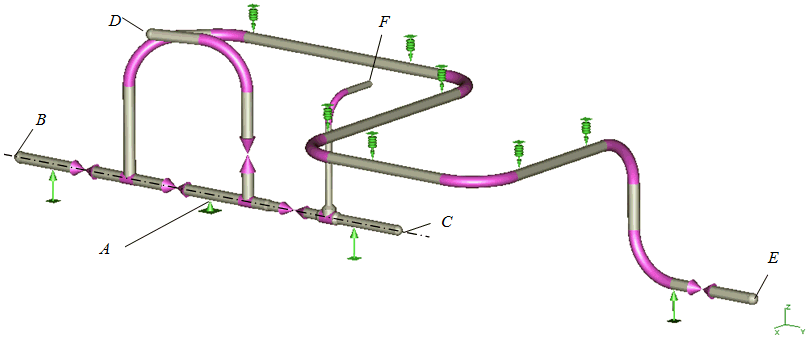
These models produce inaccurate results because free ends allow unrestrained thermal expansion. This creates artificially low stresses and support loads that don't reflect real system behavior.

Compare analysis results for this example: Pipe 219x6, 1.6 MPa pressure, Carbon Steel 20, 200°C operating temperature. Anchor at node 2, U-shaped expansion loop (5-4), unknown continuation beyond node 3.
Example project file: Pipeline continuation.ctp
Cutting the pipe at node 3 produces anchor load 653.1 kgf with acceptable code stresses. This underestimates real system loads.


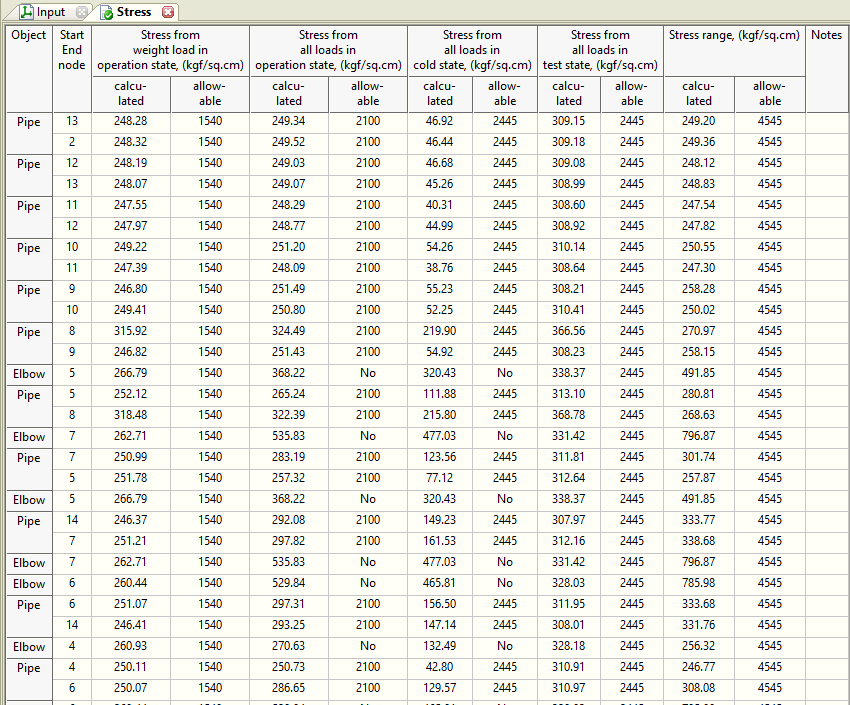
Example project file: Pipeline continuation-Anchor.ctp
Placing a fixed anchor at node 3 increases anchor load to 2153 kgf. Stresses remain acceptable. This conservative approach provides safety margin, though sometimes insufficient (see Model 4).


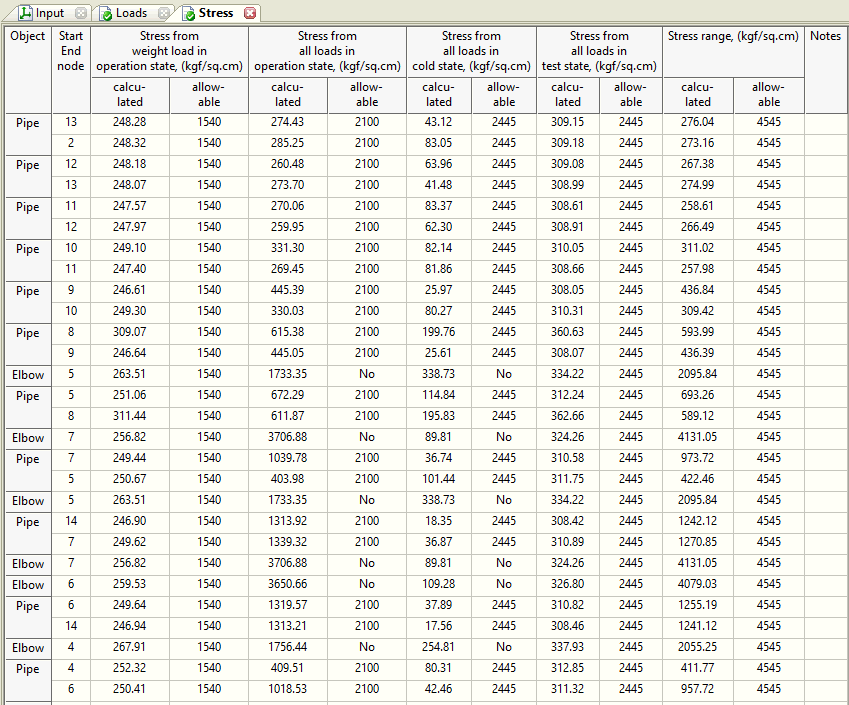
Example project file: Pipeline continuation-L loop.ctp
Modeling an L-shaped loop beyond node 3 produces intermediate anchor load 809 kgf - higher than free end but lower than fixed anchor.


Example project file: Pipeline continuation-Long line.ctp
Modeling long straight pipe beyond node 3 produces maximum anchor load 3074 kgf with excessive stresses. This worst-case scenario occurs because the straight pipe lacks expansion compensation.


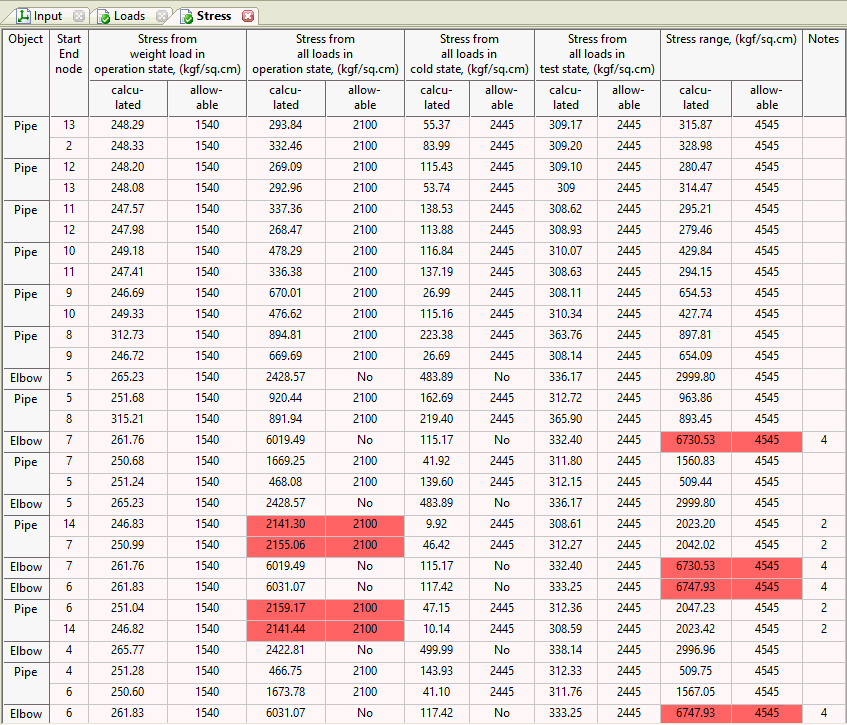
Adjacent piping configuration significantly impacts analysis results. For accurate assessment, model the complete piping system whenever possible.
When unknown continuation exists, apply these modeling approaches:
Fixed anchors at interface points generally provide conservative results for unknown piping continuation.